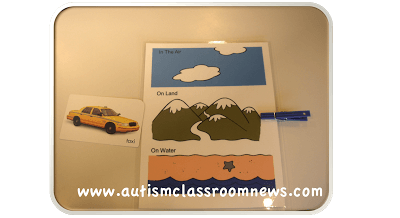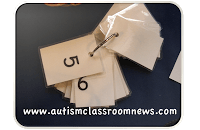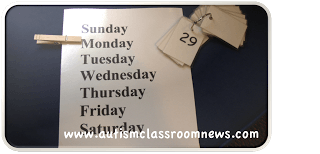Ever have a student who got lost in a group? Who sat in group instruction and had difficulty attending or following along? Ever wanted to increase opportunities for students to practice skills, but struggled to figure out how to do it?
Response Cards!
You’ve seen them with the dry erase boards or the plastic plates on Pinterest. You can use them in a variety of ways and they have a number of advantages for kids on the spectrum who have difficulty focusing on group work. They also have research to support that they increase student engagement.
Using response cards:
- Every student practices the skill every time
- Students aren’t waiting for their turn (and tuning out)
- It is easy to look around and see who gets the answer right
- Students can’t just repeat the student who answers first
So I thought I would share a few examples of how I have used response cards in a variety of situations.
This was a response card we used with young elementary students to identify whether modes of transportation were on sea, land or air. You can do the same unit with where animals live. The biggest trick in using this type of response card with the clothespin is teaching the students to use them accurately. But the good part is that it is a self-contained card so there aren’t lots of pieces to keep track of.
This is a set we made for calendar time. Each student had a set–a page with the days of the week and a clothespin and a ring of numbers 1-31. During calendar time if you have 1 calendar helper, one child practices the dates and the other children listen and follow along. With these every child finds the date each time. We had the calendar helper (2 of them) carry around a basket of them to hand them out and pick them up. I loved that it kept every student engaged and it was easy to look around and see who was getting the skill.
You can also use response cards by having students write their answers on a dry erase board, plastic plate, or a laminated piece of paper with a dry erase marker. Have each student complete the math problem and show it that way. Have students use thumbs up and down for yes and no.
There are many different ways to use them, it just takes some creativity to think how to make it work best for your class. Just remember that you have to teach most students how to use response cards. Many students with ASD who have problems with perspective have difficulty understanding that they have to turn the card around so the teacher can see it.
So, have you used response cards? How do you use them in your class–please share!
Until next time,









![Summer resources to help survive the end of the year in special education [picture-interactive books with summer themes]](https://autismclassroomresources.com/wp-content/uploads/2018/05/SUMMER-RESOURCES-ROUNDUP-FEATURE-8528-768x768.jpg)

